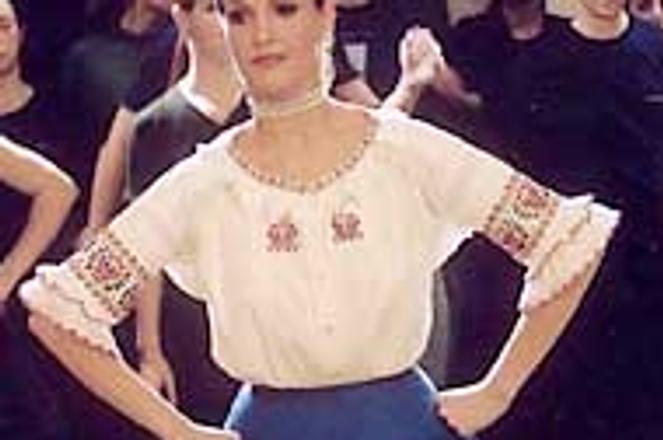ALTOGTHER now, right then left.photo: Mišo Veselský
THE DYNAMIC Šarišská polka from the Šariš region in eastern Slovakia opens the dance show of the Slovak folklore ensemble Lúčnica. The show is a parade of 15 dances from different regions of the country. It is choreographed by the company's artistic director Štefan Nosáľ and the music is largely the work of the legendary Slovak composer Svetozár Stračina.
"Stračina's name is inextricably tied to Lúčnica," says Fero Morong, 25, a Lúčnica dance soloist. He came to study in Bratislava when Stračina passed away, during the ensemble's tour of Japan in 1996.
To carry the composer's message forward, a group of enthusiasts led by Morong formed the Association of Stračina's World. They organise activities aimed at helping to preserve and promote the traditional cultural heritage, with a focus on the composer's work.
One such activity is the biannual Svetozár Stračina Grand Prix, which is being held this year for the third time. The core of the event will be the broadcast of recordings of Slovak and foreign traditional music on Slovak Radio. The live component of the festival will take place at the V-club in Bratislava on March 14.
A multimedia evening, entitled Music - The Soul of Dance, will feature highlights from the composer's life's work. Extracts from television and film projects based on Stračina's music and created for the Slovak folk ensembles Lúčnica and SĽUK will be screened. Also, Samko Smetana and his band will perform folk music, while a group of dancers calling themselves Dragúni (Dragoons) will teach visitors how to dance to Stračina's music.
These lessons of traditional dance are going to be similar to the Dance Houses that are being held at Bratislava's V-club every first Tuesday of the month and directed by Morong.
"We try to bring the dances down from the stage to the people, so they can learn them as well [as watch them]," says Morong, who is directing the March 14 project devoted to Stračina.
"Stračina's music is very rich. He knew how to make full use of every instrument. He managed to shift [the music] up onto an explosive-expansive level, making the overall result more dynamic. The music perfectly complemented the choreographer's work, and it is easy to dance to."
Stračina became a member of the Lúčnica orchestra in 1961 (as an accordion player) and soon began to compose music for dances.
Pushed by the choreographer Nosáľ, Stračina turned his attention to the roots of Slovak traditional music, from which he drew inspiration for his larger compositions. He composed primarily for Lúčnica for over 30 years.
"It's partly thanks to him that Lúčnica enjoys success at home as well as abroad," says Morong, who is very sorry he never met Stračina in person.
The multimedia project Music - The Soul of Dance starts at 19:30 on March 14 at the V-club on Námestie SNP (SNP Square) in Bratislava. Admission is free. Tel: 02/5921-4182.


